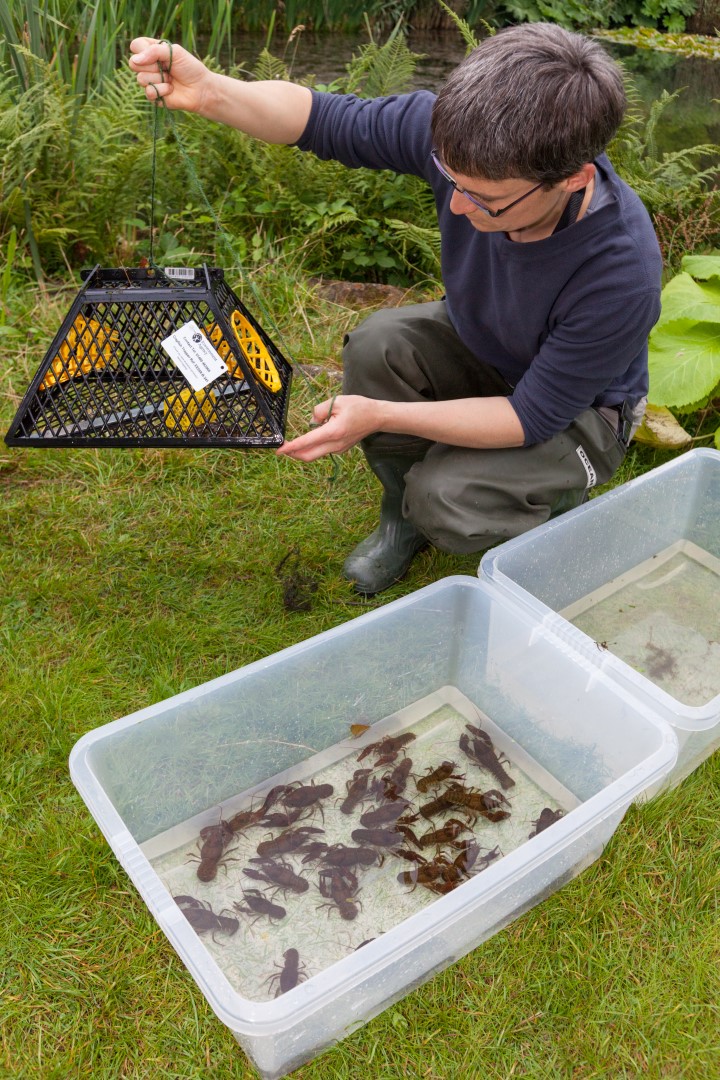Water / Case studies
# Crayfish in Crisis
The South West Peak (opens new window) is an ideal place for white-clawed crayfish to begin to recover their numbers, with lots of isolated streams and ponds.
Between 2017 and 2021, a project as part of the South West Peak Landscape Partnership, led by Staffordshire Wildlife Trust, surveyed the populations of our remaining native crayfish. Over 5,500 crayfish were moved to seven new crayfish homes, or ‘ark’ sites, with over 5,000 more assisted in migrating to safer waters.
The hope is that this important species can survive and thrive until (opens new window) efficient methods (opens new window) are developed for removing invasive American signal crayfish (opens new window), or the two can co-exist.
